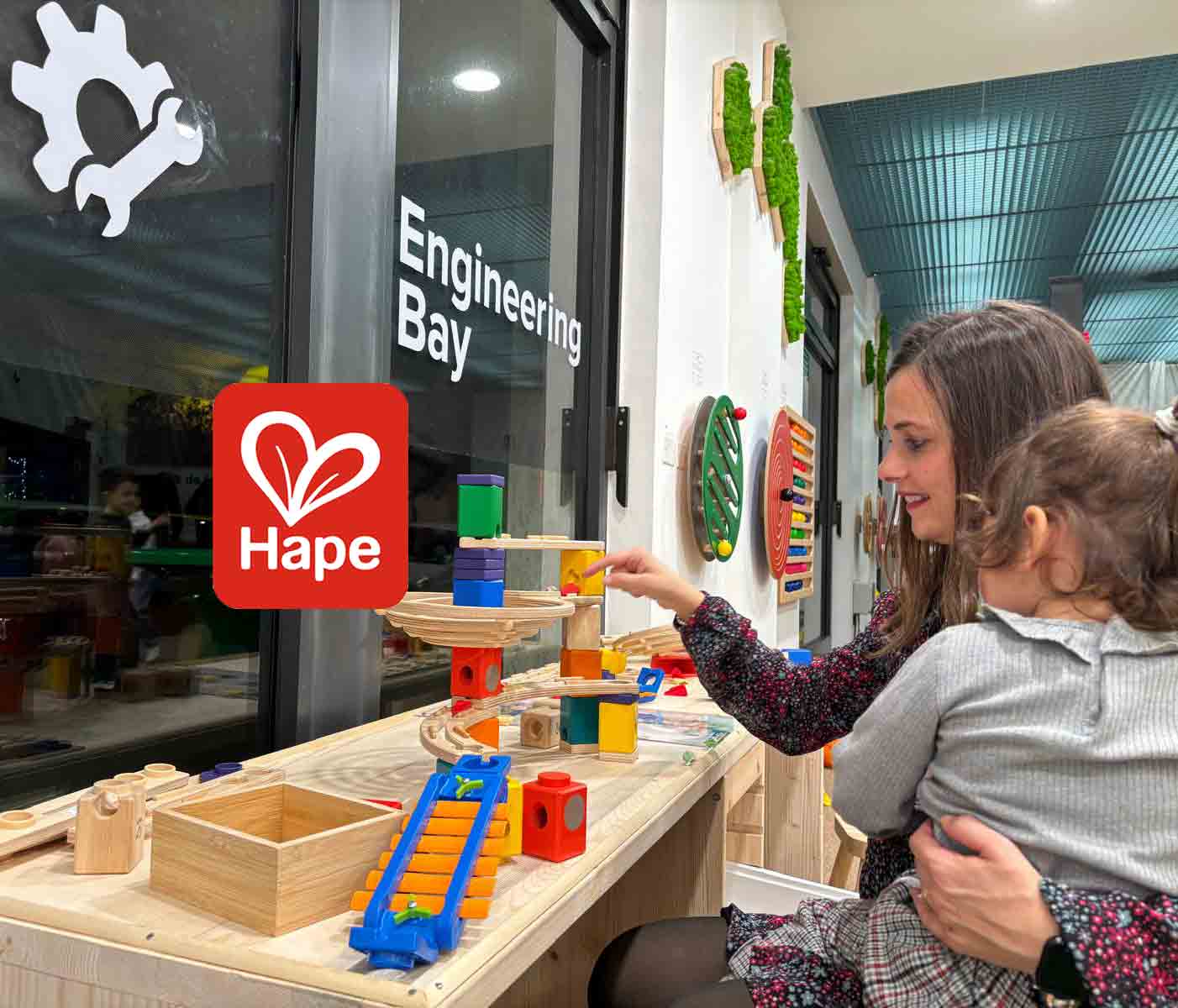In today’s world, children are surrounded by screens, whether for entertainment, education, or socializing. While technology has its place, there’s an ever-growing need to unplug and let kids experience the real world through hands-on, screen-free immersion. Immersive experiences encourage children to engage all their senses, explore their creativity, and develop cognitive, physical, and emotional skills. This article explores the power of immersive, screen-free experiences and how parents and educators can foster them.
Why Screen-Free Immersion Matters
Screen-free immersion offers a unique opportunity to nurture creativity, imagination, and physical development in ways that screens simply cannot. When children are engaged in physical play or hands-on activities, they are not only developing fine and gross motor skills but also enhancing cognitive abilities by exploring new ideas and problem-solving.
This type of immersion also helps children build critical social and emotional skills. Without the distractions of screens, kids can engage deeply in collaborative activities, role-play, and imaginative games, which help foster empathy, teamwork, and emotional expression.
Different Types of Screen-Free Immersive Experiences
Immersive experiences come in many forms, and they don’t require any screens or digital interfaces. Below, we explore various types of screen-free activities that offer children enriching, engaging experiences.
Nature-Based Immersion
One of the most enriching immersive experiences is nature-based play. Children’s innate curiosity makes nature the perfect setting for exploration. Outdoor adventure play, whether it’s building forts, exploring trails, or camping, allows kids to connect with their surroundings while learning about the environment. Activities like scavenger hunts and nature trails further immerse them in a world of discovery, teaching them to observe and appreciate the wonders of the natural world.
Hands-On Learning Spaces
For more structured learning environments, children’s museums and science centers provide hands-on experiences without relying on screens. These spaces are designed to encourage interaction with exhibits, whether it’s touching, building, or experimenting. Art installations for children, particularly those that allow them to mold, paint, and create, offer a sensory-rich experience that fosters both cognitive and physical growth.
Role-Playing and Imaginative Play
Another popular form of screen-free immersion is creative role-playing and imaginative play. Interactive theater for children, where they can participate in the story as it unfolds, allows kids to engage directly with characters and plots. Themed play spaces, such as pretend pirate ships or medieval castles, further immerse children in a world of fantasy and storytelling. At home, parents can foster this kind of immersion by creating themed play areas, using everyday items to build forts or set up scenes for imaginative storytelling.
Sensory-Based Experiences
Sensory-based experiences are another critical form of screen-free immersion. Sensory rooms or playgrounds designed to engage a child’s touch, sight, and hearing allow for meaningful interaction with their environment. Messy play zones, where children can experiment with mud, sand, water, or clay, are particularly beneficial for younger children who are learning through tactile experiences. Outdoor musical and sound gardens also provide an immersive environment where kids can explore different sounds, rhythms, and musical instruments.
The Benefits of Screen-Free Immersive Play
The benefits of screen-free immersive play are extensive, contributing to various aspects of child development. Here’s how these experiences help children grow:
Cognitive Development
Through hands-on, real-world challenges, children improve their problem-solving skills. Activities that require focus and attention, such as building structures or solving puzzles, also boost memory and concentration. Without the distractions of screens, children learn to engage deeply with tasks, improving their ability to focus and think critically.
Physical and Motor Skills Growth
Screen-free play supports physical development by encouraging children to use their bodies in various ways. Whether they’re climbing a tree, running through a nature trail, or manipulating small objects, these activities enhance both fine and gross motor skills. This active engagement ensures that children’s physical development keeps pace with their cognitive growth.
Social and Emotional Development
Immersive, screen-free play helps children build essential social and emotional skills. When kids collaborate in play, such as role-playing games or group projects, they learn to work together, resolve conflicts, and express their emotions. Imaginative play, in particular, helps children understand different perspectives and navigate their own feelings in a creative and safe environment.
Popular Screen-Free Immersive Experiences
Immersive experiences can be found in a variety of environments, from public spaces to at-home creations. Here are some popular screen-free activities that have proven to be both engaging and educational.
Interactive Exhibits at Children’s Museums
Children’s museums are some of the best places for immersive, screen-free experiences. Interactive exhibits allow children to touch, build, and explore different concepts. These museums encourage children to use their hands and minds to solve problems, whether it’s constructing a building out of blocks or experimenting with water flows. The tactile nature of these exhibits makes learning engaging and accessible, even for young children who are not yet ready for formal education.
Nature-Based Experiences in Adventure Playgrounds
Nature-based experiences, such as adventure playgrounds and trails, provide open spaces where children can run, climb, and build with natural materials like sticks and leaves. Nature trails offer opportunities for exploration and learning about ecosystems, wildlife, and plants. These environments give children the freedom to engage with their surroundings in a way that promotes both learning and physical activity.
Immersive Theater and Role-Playing Spaces
Interactive theater and role-playing spaces invite children to immerse themselves in stories and characters. Unlike watching a show on a screen, interactive theater lets children be part of the narrative, making decisions and solving problems as the story progresses. This type of immersion enhances emotional engagement and boosts understanding of narrative structures, making learning both fun and interactive.
How Parents and Educators Can Foster Screen-Free Immersion
There are many ways parents and educators can promote screen-free immersive play, both at home and in community spaces. Here’s how:
Encouraging Free Play and Unstructured Time
One of the best ways parents can encourage immersive, screen-free play is by allowing for unstructured time. Children need space and freedom to explore their creativity without strict guidelines. Letting children lead their own play helps them build confidence and independence while fostering their imagination.
Engaging the Community for Screen-Free Activities
Community involvement is another way to foster immersive, screen-free experiences. Visiting children’s museums, participating in community workshops, or attending family events focused on hands-on activities provides children with additional opportunities to explore new ideas in a safe, engaging environment.
Creating Dedicated Play Spaces
At home, creating dedicated play spaces can make a significant difference. Setting up an art corner, a nature exploration nook, or a building zone with blocks and other materials encourages children to engage in hands-on learning. Having a variety of materials available allows kids to experiment with different textures, shapes, and sounds, creating an environment rich in sensory and cognitive stimulation.
Challenges and Considerations
While screen-free immersion offers many benefits, balancing technology with hands-on play can be challenging in today’s screen-driven world. It’s essential to set boundaries around screen time while promoting physical, sensory activities that stimulate a child’s development. Creating a balance between digital learning and real-world experiences ensures that children can enjoy the benefits of both.
Accessibility is another consideration. Not all families have easy access to nature trails, children’s museums, or sensory spaces. Finding local community resources, such as parks, libraries, or public programs, can help bridge the gap and provide children with meaningful, immersive experiences without the need for expensive materials or travel.
The Future of Screen-Free Immersive Experiences
The future of immersive experiences will continue to prioritize hands-on learning environments. As the need for unplugged experiences grows, communities, educators, and parents will play an essential role in creating opportunities for children to engage in screen-free learning. From children’s museums to nature-based programs, the demand for enriching, real-world experiences will continue to rise, especially as concerns about excessive screen time grow.
Additionally, the future will likely focus on eco-friendly, sustainable immersive environments. Nature-based learning, outdoor playgrounds, and environmentally conscious design will play key roles in ensuring that future generations of children can enjoy immersive experiences that foster their development without harming the planet.
Conclusion
Screen-free immersive experiences offer children the opportunity to explore, create, and grow in ways that technology often can’t replicate. By fostering a love for hands-on, imaginative play, parents and educators help children develop crucial cognitive, physical, and emotional skills. Encouraging more screen-free activities in daily routines will lead to more balanced, well-rounded development and ensure that children build a lifelong love of learning through direct engagement with the world around them.



